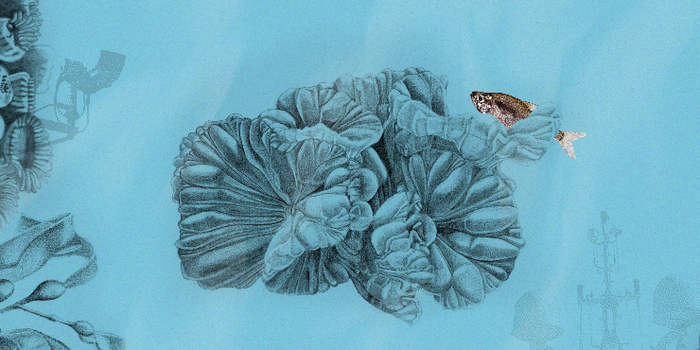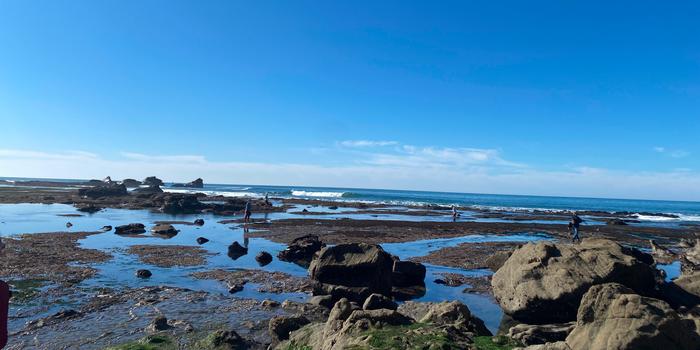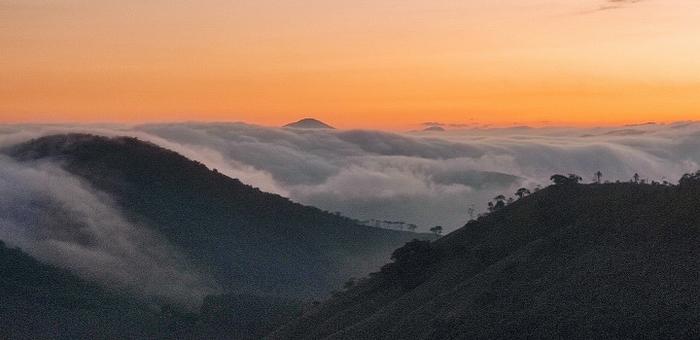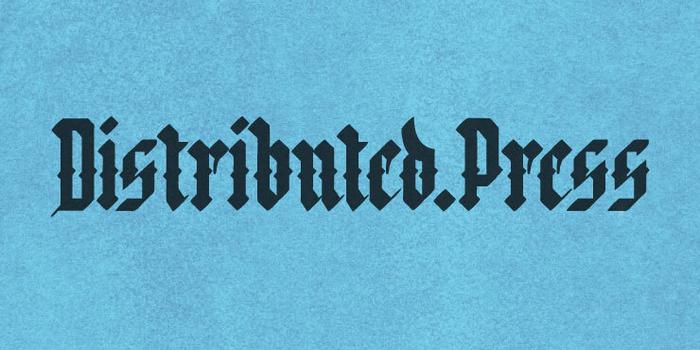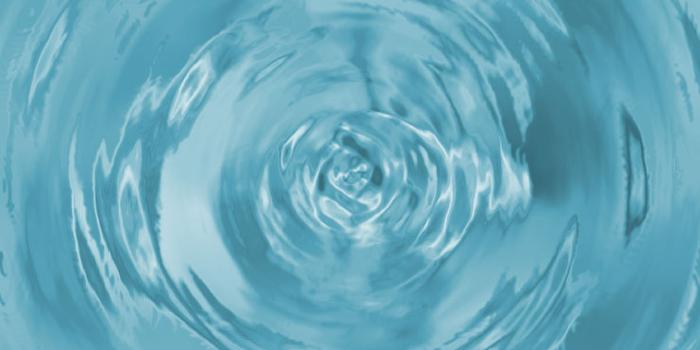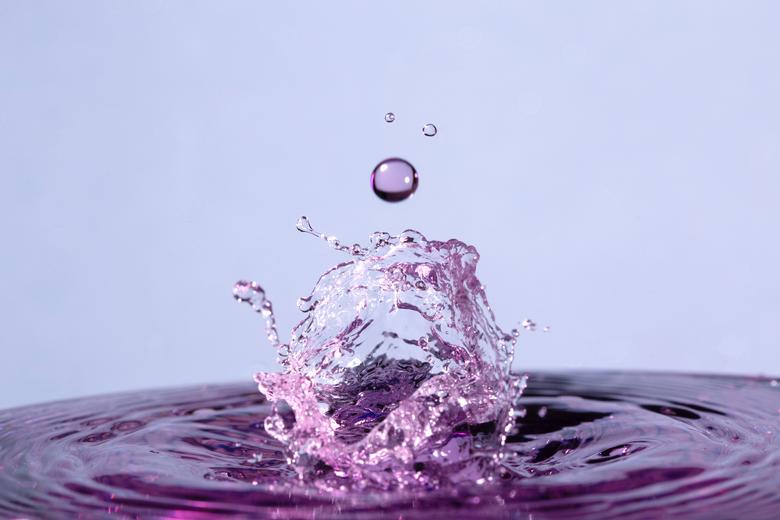
Every Drop
Olu Niyi-Awosusi
Water is everywhere and nowhere all at once. How can a material so intrinsic, so essential to life, be so constantly overlooked? We pay attention when it’s absent or disruptive, but otherwise we try to ignore its importance — much like how our internet connections are only notable on the days they cut out.
An explosive leak from a broken boiler destroyed almost all of my childhood photographs; polaroids and disposable film snapshots that were kept in a bright orange and red cloth holdall in the cupboard under the stairs. I remember being faintly angry at my mother, rather than at the water or the event itself. Why hadn’t she stored the pictures in plastic? Why hadn’t she scanned them? My family copied all the pictures that were left, after peeling apart and inspecting to see which, if any of note, survived the deluge.
The River Lea winds through my hometown of Luton, emerging unceremoniously from a concrete block — as a child I was told its ultimate source was Marsh Farm, a northern part of town. I remember friends speaking dismissively of the area as rough, despite never hanging out there. We all came from the city center or the comparably posh neighborhood of Stopsley. Luton is rough to everyone outside of Luton, so I never understood the snobbery. We hung out occasionally in the park by the river where it cuts through the city center. The river is clogged with stolen shopping trolleys, bikes, and other rubbish, like an artery clogged with cholesterol. Still, the river flows; water does as it must, and it emerges where it needs to. I’ve learnt that water creates, destroys, sustains, and weakens. All are true at once, all are its properties; as it runs the river, it wears down its banks.
We may not notice it, but it’s running under our cities; as groundwater, gray water, sewage; it’s being treated and boiled and ran through machines from cars to dishwashers every day; it’s being drunk, sprinkled, poured over hair, bodies, pots, porcelain, every second of every day.
While writing this piece, I realized I often say “we”, and by we I mean internet natives; people who grew up not understanding there was a world before the internet. Or like me, those who have grown to love and loathe it over long nights spent on forums after battling their parents for control of the landline, listening to the dial up bleep away after a victory in the background. Those who have a sense that their internet usage has a corporal impact, but have yet to reckon with the knowledge of it.

Accessible freshwater makes up only 0.007 percent of the water in the world1; 70 percent of the planet is covered in water but only 2.5 percent of it is fresh, and most of that is in glaciers and other hard-to-reach places. According to the United Nations, freshwater demand is going to increase 55 percent by 20502 and there is going to be a shortfall, with more and more people experiencing water stress and scarcity. Studies estimate that, for every one degree Celsius of climate change related temperature increases, there will be a 20 percent drop in renewable water3. Rising sea levels caused by climate change make freshwater sources salty and unsuitable for drinking. This lack of water will have far reaching implications.
Due to a lack of hygienic sources of water, the lack of water to clean oneself, infected available water, and rising temperatures causing pathogens to multiply in available water sources, many water sources will become unsafe. Wars fought over water loom large in the distance, and though the link between a lack of water and conflict isn’t straightforward, tensions between local people and government and local communities and corporations rage on.
So, how much water does a person need? That, of course, depends on how we define need. There’s bare bones survival; humans can get by for weeks without food but only three days without water, and one liter of drinking water a day will keep a human alive for the foreseeable future. For a good life, though, the amount is far more debatable. What makes a good life? Who is allowed to use all the water they need to make their life bigger, to cross new frontiers humans have never crossed before, and who is excluded from controlling a single drop?
The amount of water needed for a healthy person to stay healthy is two and half-ish liters a day, from food or drinking alone. Depending on who you ask, the heat and exertion of the person, and whether they have read articles about eight glasses of water a day being made up, it may be a bit more or less. This of course doesn’t account for the grand scale of water in constructing shelter, producing food, or creating clothing. Nor the water needed to create and staff the arteries and organs of our cities: the roads, the hospitals, the train stations, the fire departments . . . the electricity, the water used for coolant and extinguishing, the water used for building, the water used for growing, the water used for manufacturing, on and on.
We use so much of it, and we have not turned to our technology; the things that for so many people make life liveable in its current state. The digital intruding upon our lives is enjoyable in a lot of cases, separable from the nasty, brutish, and short lives before the widespread use of electricity for lots more, and the world kept connected through phone lines and reams of paper letters in the more recent past. Most things these days — from our systems of communication to the machinations of government — are mediated by a layer of technology.
The internet itself is kept alive through the use of massive data centers, cooled with billions of liters of water a day. Digital infrastructure so often gets away from the flak other physical mediums get for being unfriendly for the environment. We’re called upon to Not Print This Email or Go Paperless, as if storing things in the cloud was waste, water, and toxin-free. The internet is not “in the cloud”, in some ephemeral sense, it’s in the cloud just as the water that is in the rain is. Rain affects us all down here on the ground, the water we use eventually feeds back into the clouds in the distant sky.
The digital cloud is a real, tangible thing, affected and shaped by our treatment and interaction with our planet.

Data Centers
Google is one of the world’s biggest tech companies, and I will focus on them in this piece as a microcosm of the industry at large. Their water use is spread over many areas: notably across their data centers, where it is used as coolant, as well as in their use of lithium batteries. They’ve just started using lithium batteries in one of their data centers for backup electricity storage but also use lithium in devices from phones to smart speakers.
So we begin with data centers. Google’s data centers consume 450,000 gallons of water a day4, a fact they’re keen to compare to other eye-wateringly high consumption rates. It’s the same amount it would take to water seventeen acres of grass, or produce 160 pairs of cotton jeans.

Image from one of their webpages,5 weirdly titled “climate conscious cooling”
It took 4.3 billion gallons of water to keep Google’s entire data center fleet cool in 2021; again, a fact Google is keen to compare to the amount of water needed to keep twenty-nine Southwest US golf courses lush and green. This is a strange comparison, as environmentalists the world over seem to hate golf courses for that very reason, with a Thai golf course using as much water as 60,000 rural villagers by one report6.
In most areas of the world, 70 percent of freshwater is used for agriculture7, whilst 19 percent is used for industrial applications and 11 percent for domestic ones8, including drinking. In Europe and Central Asia, it’s more like 35 percent for agriculture.
Looking at the data more closely, you see that higher income countries aren’t the ones9 using all their water for growing food; not that this is bad in itself, but I also read that 1 percent of farmers worldwide own 70 percent of farmland10.
Richer countries are more likely to import food, so this litany of facts increasingly becomes a story of the poor using their water and labor to feed the rich, and not retaining control of their water.
Google’s data centers are clustered mostly in North America and Europe. The two outliers are in Chile, which Google claims is “one of the most environmentally friendly in Latin America11,” and in Singapore, which it claims is “one of the most efficient and environmentally friendly in Asia12”.
Chile is severely water stressed, with half of its population living in areas with severe water scarcity13 by the end of 2021. In 2019, demonstrators took to the streets to protest inequality, and their slogan “it’s not drought, it’s theft” rings true here. Chile’s water system is privatized, leading to high prices, poor service, and very little being done to address supply concerns. Water is not a human right enshrined in law there14, though this is not uncommon. England also has fully privatized water15, not just in urban areas as in Chile, and many more countries have partial privatization16.
Activists battled the opening of the Google data center in Chile over its original plans that would have had the center consume 169 liters of water a second17 in an area already fighting drought. Google eventually proposed a less water intensive solution.
Re-municipalisation of water — or the return of private water to public ownership — is being called for the world over. This would require negotiation of contracts such as those with data centers for them to stay in operation. This would be one step towards a better water distribution, with those locally affected having some sway over the ways in which their water is used.

Mineral Extraction
The minerals used by tech companies in batteries, like lithium, also represent a huge amount of water use. South America’s “Lithium Triangle”, made up of parts of Argentina, Bolivia, and Chile, holds more than half the world’s supply and is also incredibly water stressed. Lithium is water mined; collected by creating brine18. This brine has up 0.15 percent lithium, which is then dried off to expose the minerals.
It is a cheap method of extracting lithium, and according to researchers, up to 95 percent19 of the extracted brine water is lost to evaporation and not recovered. It takes around 500,000 gallons of water to mine a tonne of it. More than half of today’s lithium production is in areas with high water stress20. San Cristóbal’s mine in Bolivia uses 50,000 litres of water a day21. In 2022, Serbia withdrew licenses for a lithium mine22 because of protests; demonstrators said the site would contaminate water supplies and damage the landscape.
Toxic chemicals can also leak from the evaporation pools where lithium is prepared into the general water supply. In Tibet, chemicals used by the Ganzizhou Rongda Lithium mine in Dartsedo have leaked into the Lichu River, killing fish and farm animals belonging to the local community23. In Australia and North America, lithium is hard-rock mined, an older method. This still uses similar chemicals to extract it, however, and researchers in Nevada found lithium-related toxins in fish as far as 150 miles downstream from a processing plant.
A lithium-ion battery for an electric car contains about 8 kg of lithium24. In 2022, humans produced about 90.7 million kg25 and, worldwide, lithium reserves are estimated to be 20 billion kg. Enough lithium was mined last year to make just under 11.4 million electric vehicle batteries, an amount that sales could already hit soon26. It seems unlikely that reserves — and inefficient recycling efforts — will cover the need at present, especially as these calculations assume all the lithium produced will go to vehicles.
As well as using lithium batteries in many of its consumer products, Google has also begun using them to replace a small fraction of their diesel backup generators27 — data centers have to be online 24/7 so no downtime is highly preferable — eventually hoping to both replace their fleet of diesel back ups and to sell and store excess energy.
Cobalt is another important battery component, and around 70 percent of this element is found in the Democratic Republic of the Congo28. About 90 percent of the DRC’s cobalt comes from traditional mining, but due to low average earnings in the country (less than $1,200 a year), the appetite for artisanal mining — using the work of individuals and small businesses — is very high. Unfortunately, artisanal mines are plagued with the use of child labour and unsafe working conditions. Researchers are attempting to replace cobalt with less rare metals, and to extract cobalt from new sites, such as those under the sea29.
Google claims they’re going to be able to replenish 120 percent of the water they use by 2030. They have also revealed steps they will take on the way to “water positivity30”.
To me, this seems like a nice attempt at greenwashing.
Simply replenishing the water Google, the tech industry and corporations in general use with a little added to the top will not reverse all the harm that their extracting has done. It will not cool the heated world or do anything to slow the rising tide of climate change and water shortages in the places where they operate.

All of this raises questions that are big and scary and pertinent: do I, or we, have a right to exist on the internet, when it needs so many resources, and so much of our water, to exist? Hot running water was something I lacked in the period after the boiler imploded during my childhood; the cold and the inconvenience showed me how much running water matters to my and everyone else’s lives. In the same house, the toilet flush broke and for months we flushed the toilet with a bucket; a simple action that suddenly exposed just how much water it used every day. When these basic acts are so much harder to do, it draws attention to what one really needs.
Do we need to use water in the ways we currently do? Does it serve us all to have technology use so much of our water? These questions make me wonder if the internet should exist at all; in its current state it doubtless helps countless people, but harms countless others. I worry we strip the world for our own ends, never thinking about whether we’ve actually invented our way out of many issues, and so assuming our technology will lead to new technology that can solve the issues of its own poisonous origins. At the same time, I know that there is little reason to be optimistic. Our planet is heating, people are thirsty the world over, and those with the means and technology to do things about it turn away from the possibility of helping as they chase profits and power.
Without the internet I would surely be dead, or at least dead inside; sporadic letters and late night phone calls wouldn’t have sustained me through my teenhood, let alone the rest of my life. I’m a web developer, so building the internet is what clothes and shelters me. I’m not sure I can look past my own luck and ignore other things in the middle distance; past the vast pools of blood; past the dry and toxified land and past the pain of the planet and of my fellow people. Whilst profit motives push innovation and drive the machinations of Silicon Valley and technology companies everywhere on Earth, nothing can change.
I don’t have answers, even as our waterways bleed dry, but I hope that collectively we can move towards ways of working with technology and our world that work with, and not against, its systems – ways that preserve and build rather than just destroy and erode. I have hope in the labor movements, alternative business structures, and political movements agitating for change. I hope that, like all rivers go to the sea, these movements are moving us in the right direction. I hope we can become more like water — nourishing, cleaning, regenerating, destroying, and eroding where necessary — and use water in more replenishing and sustainable ways than we currently do.

- https://www.nationalgeographic.com/environment/article/freshwater-crisis ↩︎︎
- https://www.scientificamerican.com/article/5-billion-people-will-face-water-shortages-by-2050-u-n-says/ ↩︎︎
- https://news.un.org/en/story/2022/05/1118722 ↩︎︎
- https://youtu.be/LNkmwrTjKuo - a video in which NASA dumped the same amount of water to test a cooling system, in case you wonder what that looks like. ↩︎︎
- https://blog.google/outreach-initiatives/sustainability/our-commitment-to-climate-conscious-data-center-cooling/ ↩︎︎
- https://www.euronews.com/green/2022/07/17/golf-is-a-giant-board-game-damaging-the-planet-time-for-it-to-go ↩︎︎
- https://blogs.worldbank.org/opendata/chart-globally-70-freshwater-used-agriculture ↩︎︎
- https://www.cfr.org/backgrounder/water-stress-global-problem-thats-getting-worse ↩︎︎
- https://data.worldbank.org/indicator/er.h2o.fwag.zs ↩︎︎
- https://www.theguardian.com/environment/2020/nov/24/farmland-inequality-is-rising-around-the-world-finds-report ↩︎︎
- https://www.google.com/about/datacenters/locations/quilicura/ ↩︎︎
- https://www.google.com/about/datacenters/locations/singapore/ ↩︎︎
- https://www.theguardian.com/world/2022/jun/01/chiles-water-crisis-megadrought-reaching-breaking-point ↩︎︎
- https://www.theguardian.com/sustainable-business/2016/sep/15/chile-santiago-water-supply-drought-climate-change-privatisation-neoliberalism-human-right ↩︎︎
- https://www.ciwem.org/the-environment/how-should-water-and-environmental-management-firms-tap,-retain-and-promote-female-talent ↩︎︎
- https://www.rapidtransition.org/stories/turning-the-tide-of-water-privatization-the-rise-of-the-new-municipal-movement/ ↩︎︎
- https://blogs.lse.ac.uk/medialse/2022/11/02/big-techs-new-headache-data-centre-activism-flourishes-across-the-world/ ↩︎︎
- See related article from Issue 01: one.compost.digital/the-salt-of-the-cosmos/ ↩︎︎
- https://eandt.theiet.org/content/articles/2019/08/lithium-firms-are-depleting-vital-water-supplies-in-chile-according-to-et-analysis/ ↩︎︎
- https://iea.blob.core.windows.net/assets/ffd2a83b-8c30-4e9d-980a-52b6d9a86fdc/TheRoleofCriticalMineralsinCleanEnergyTransitions.pdf ↩︎︎
- https://www.mining-technology.com/analysis/lithiums-water-problem/ ↩︎︎
- https://www.bbc.co.uk/news/world-europe-60081853 ↩︎︎
- https://www.wired.co.uk/article/lithium-batteries-environment-impact ↩︎︎
- https://www.nature.com/articles/d41586-021-02222-1 ↩︎︎
- https://pubs.usgs.gov/periodicals/mcs2022/mcs2022.pdf ↩︎︎
- https://www.iea.org/reports/global-ev-outlook-2022/executive-summary ↩︎︎
- https://www.iea.org/reports/global-ev-outlook-2022/executive-summary ↩︎︎
- https://www.nature.com/articles/d41586-021-01735-z ↩︎︎
- https://therevelator.org/ev-batteries-seabed-mining/ ↩︎︎
- https://www.gstatic.com/gumdrop/sustainability/google-water-stewardship.pdf ↩︎︎


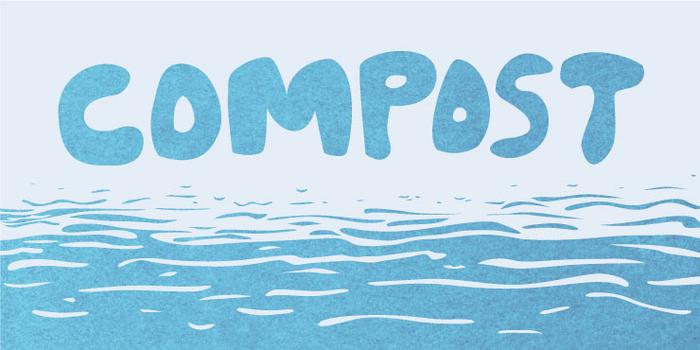
%20(3)_700x350.jpg)
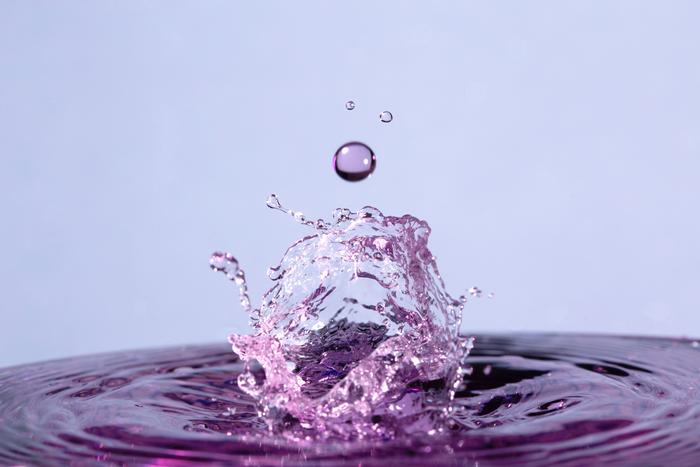
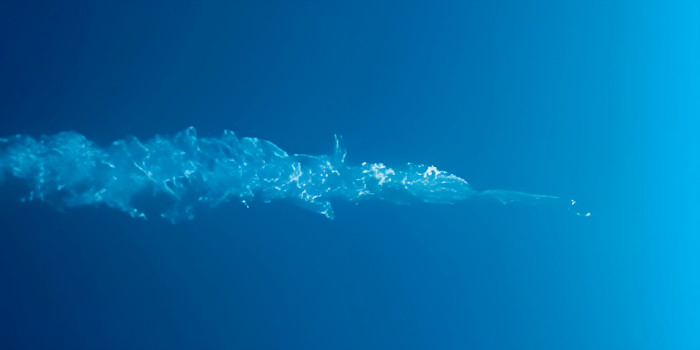
_700x700.png)
